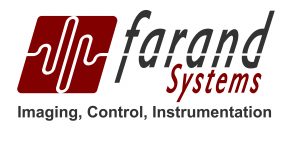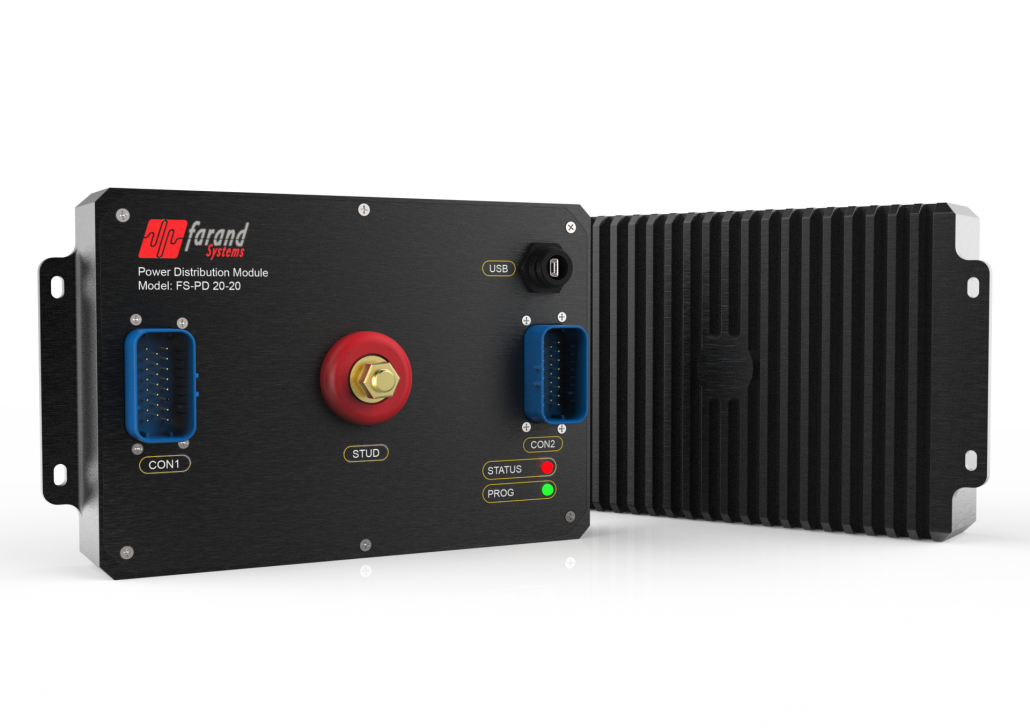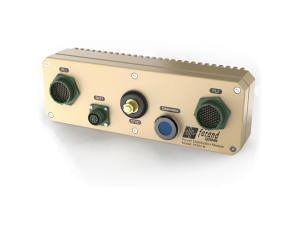Electric Power Distributor
Farand Systems has designed and produced a fully configurable Power Distribution Module. This module uses a state-of-the-art ARM microcontroller which can be programmed to provide control of all the DC electric components in a vehicle, boat or other battery operated system. Solid state switches replace the traditional relays and exhibit higher reliability and superior performance. While classical methods use fuses or electromechanical circuit breakers, this modern power distribution module makes use of programmable electronic circuit protection which can be configured for each output channel separately. Software programmable current ratings makes the device adaptable to user requirements and speeds up hardware modifications.
The system can accept a number of inputs in a variety of voltage standards; they can originate from On/Off switches or as analog signals from different sensors. This way panel switches and joysticks together with industry standard sensors can be connected to the power distributor module.
A number of On/Off outputs are available which can supply enough DC current to drive most of the consumers used in vehicles, boats and other medium power appliances. All of the outputs are electronically protected against overcurrent and break the circuit with a behavior which can be chosen to resemble slow, medium and fast automotive fuses.
Using an intuitive and easy to use Windows based software, the user can define the input/output logical relationship and timing for all the channels. This makes the power distribution module so versatile that it can be used as an ECU (Electronic Control Unit) for vehicles, and boats, and as an integrated PLC/driver to control processes which use battery as their electric power source. This reduces the complexity of wiring and protection drastically which in turn leads to cheaper, and lighter solution with incredibly easier and faster installation and service.
All the inputs and output signals are recorded on an internal flash memory at a programmable rate. So the user can study the device history and find the sources of fault or failure.
The system can easily be interfaced via a standard USB cable for configuration and log data readout. It can also be interfaced via an RS485 or CAN serial link to receive commands or send system status to a remote processor.
Some highlighted Technical Specifications are:
- Operating Voltage 1224V DC
- Output Power: 150 A Total Current Consumption
- Inputs: 20 On/Off or Analog signals, Outputs: (۱۰outputs @ 20 A, 10 outputs @ 10A)
- Overcurrent Protection Response: 1.0 milliseconds max.
- Fully programmable logic and timing
- Overheating and overcurrent protection.




